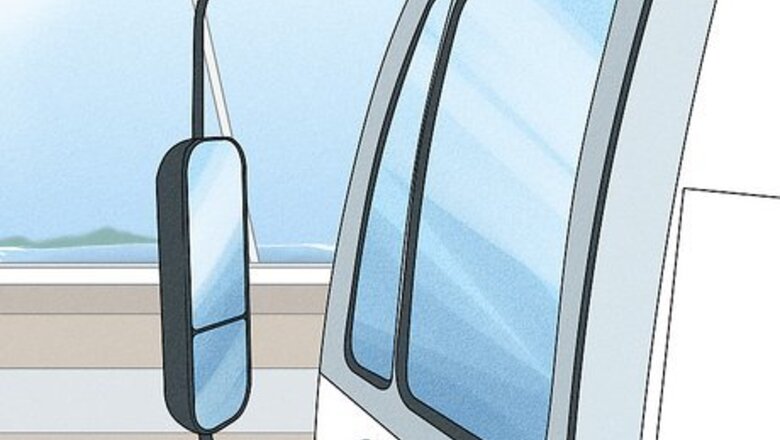
views
Pulling Large Vehicles into a Parking Spot
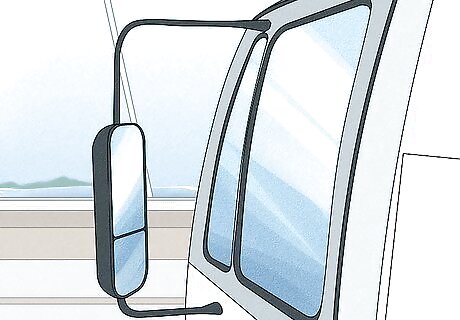
Check your mirrors before parking. Poorly adjusted mirrors could result in you losing perspective while parking. This can hurt your ability to gauge the distance between your vehicles and obstructions. You’ll want as clear and complete a view of the area around your vehicle as possible. Even if you are more confident in your parking skills, you should always double check your blind spots to ensure you don’t back into kids, pedestrians, or moving objects, like strollers and shopping carts. Larger vehicles may have additional mirror mounted to the body of the vehicle to improve visibility. These additional mirrors can be easily forgotten by casual large vehicle drivers. Check these regularly when parking.
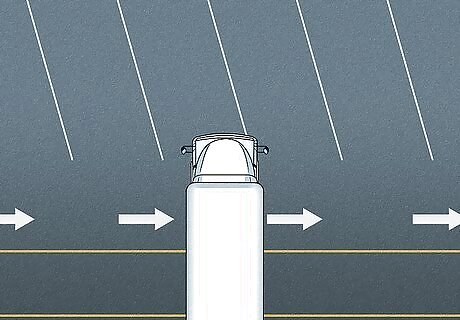
Give yourself plenty of space. The more space you have to pull into your spot, the more space you’ll have to maneuver and make adjustments while parking. You might give yourself more space by parking in an empty part of a parking lot, or you could also choose a spot that is surrounded by smaller, more compact vehicles. Smaller vehicles on either side of your large truck will take up less space in their own parking spot, giving you more leeway as you park.
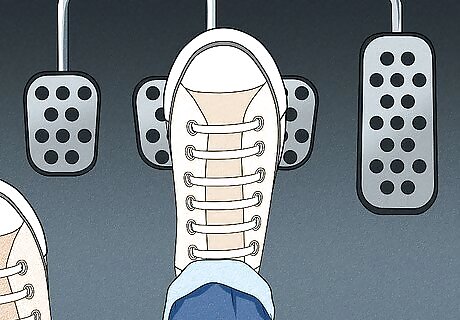
Park slowly and brake early. The increased weight of a large vehicle will require you to brake sooner than you would for a normal car, especially if you have a heavy load you are transporting. Taking your time when parking your large vehicle can prevent costly errors, like damaging cars around you or hitting a parking barrier.
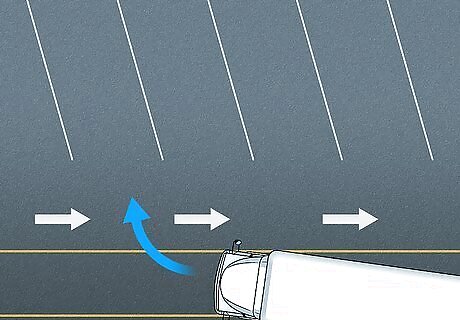
Pull in to wide open spots. This is perhaps the safest route if you are less confidant in your large vehicle parking ability. Choose a location of the parking area that is free of other cars. Cut your wheel in the direction you are turning to move into the spot. You may notice your front end swinging over the parking spot lines into the spot beside you. This is due to the fact that larger vehicles require a wider turning radius to complete turns. You may need to adjust your vehicle in your space after pulling in. Put your vehicle in reverse, check your mirrors and blind spots, then back up. When you pull back into your spot after backing out, adjust your wheel to straighten out your vehicle as you pull into the spot again.
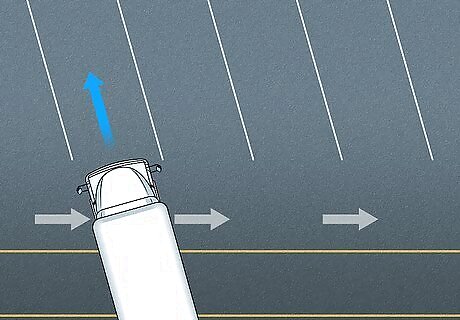
Avoid overshooting or undercutting your turn. The length of your large vehicle will require more space spent turning for you to straighten it out and pull it evenly into its spot. Turning as you would normally in a regular car can lead to over or underturning, potentially into other vehicles. To prevent this you should: Maneuver your vehicle as far away from the parking spot as you are able. The more space you have to approach, the easier it will be for you to straighten your back end and pull into the spot. Cut your wheel hard in the direction of the spot you are parking. You’ll want the front end of your truck to enter the spot as straight as possible. Check your mirrors constantly while pulling into your spot. The side of your vehicle may still be straightening, and you’ll need to keep a careful eye to ensure you do not bump or scratch other vehicles.

Straighten your vehicle with a three-point turn. The more aligned your back end is with the spot you are aiming to park in, the less turning you will have to do and the easier your parking job will be. A three-point turn is where you turn in one direction as far as you are able, put your vehicle in reverse to straighten your front end, and then finish your turn by continuing it. You can use this while parking by: Pulling your front end close to one of the vehicles next to the spot in which you are parking. Putting your vehicle in reverse and straightening it to line up with your spot as much as possible. Be sure to check your mirrors and blind spots so you don’t hit any pedestrians or cars parked behind you.
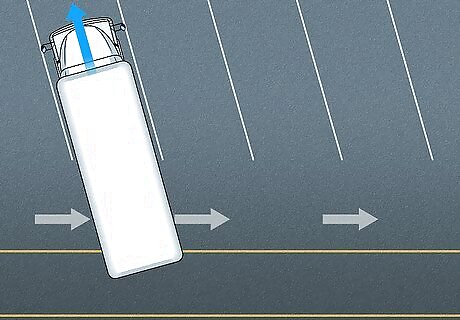
Pull into your spot evenly out of your three-point turn. Now that your car is more lined up with the spot, it’s likely you’ll only have to make slight adjustments to your course as you pull into it. Executing this move in tight spaces is a valuable skill when driving a large vehicle, so you may want to practice how to make a three-point turn.
Backing Large Vehicles into a Parking Spot
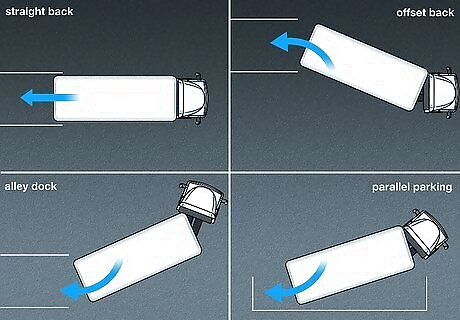
Identify your backing up maneuver. There are four main kinds of backing up maneuvers you might come across in your large vehicle driving: straight back, offset back, alley dock, and parallel parking. Each of these can be identified by the following characteristics: Straight back spots are usually located in a grid and form a perpendicular (L-shaped) angle with the traffic passage that vehicles pass through to go deeper into or exit from the parking area. Offset back spaces are usually arranged in an offset grid. These meet the traffic passage vehicles use to enter into or exit the parking area at a diagonal angle. Alley dock spaces are almost always for semi-trucks. These require you to move straight back through a narrow passage and then turn sharply to maneuver the trailer to meet a loading/unloading dock, which is usually at a right angle (L-shape) to the passage. Parallel parking spaces are on the side of the road, with either traffic, obstacles, or empty spaces before or after the spot. These require you to back your vehicle in, and can be especially challenging. New drivers may want to avoid these if at all possible.
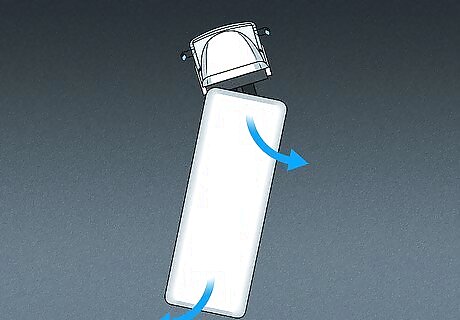
Understand the mechanics of backing up. This is going to be slightly different for semi-trucks/vehicles with a trailer versus large, normal trucks that have a bed attached to the cab. While large, attached-bed trucks will turn similarly to smaller vehicles you may be used to driving, these will require plenty of extra room to complete the turn. Semi-trucks/vehicles with trailers will turn backwards opposite the direction you turn your wheel. Getting the hang of backing up a semi-truck/vehicle with a trailer requires time and practice. You should consider finding an empty parking area and executing reverse maneuvers to get a feel for how your trailer responds to turning. If you are are prepping for a driving test or expect to have to reverse your large vehicle into a space, you should purchase some traffic cones from your local hardware store or set out some obstacles, like a cheap folding chair, in an empty parking area. This way you can practice avoiding and guiding your trailer/rear end around obstacles.
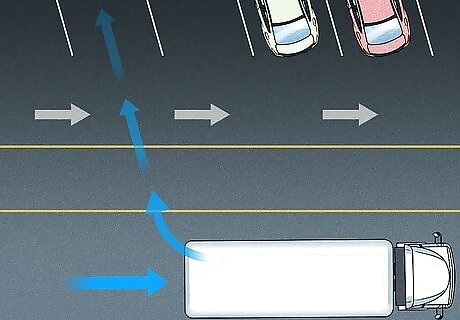
Pull ahead of your spot. You'll want to pull several feet ahead of your parking spot to make sure your turn doesn't cut too sharp and hit parked vehicles in the near-side spot, or swing wide and hit vehicles parked in the far-side spot. The more distance between your large vehicle and the parked cars means you will have more distance to straighten your rear-end before approaching the parked vehicles. This extra room can be the difference between scraping up another car and sliding into your spot without incident. Roll down your mirrors on both the driver and passenger side of your vehicle. You want as clear and as unobstructed a view as possible of your mirrors. Do this especially it it's raining, as raindrops can negatively impact your perspective or obstruct your view. Ask any passengers to step out of the vehicle. Even well-behaved passengers can be difficult to see around while backing up. A clear line of sight will help you prevent potential damage to your vehicle or others.
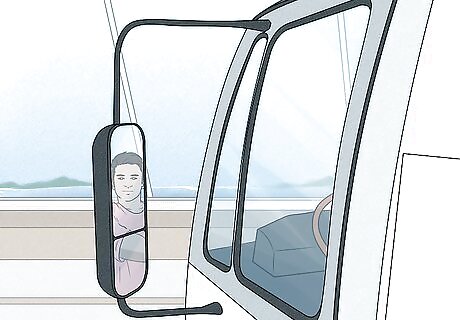
Check your mirrors and do a walk-around. Your mirrors should give you a general sense of the dimensions of the area you will be parking in. However, mirrors can sometimes distort distance or miss important features, like thin metal signs, posts, and so on. Take note of the surroundings in your mirrors and step outside of your vehicle. Then: Compare your walk-around evaluation of the parking area to your mirror view. Note any inconsistencies, difficult to see obstacles, or missed obstacles. Evaluate the size of the parking spot. If you feel that the spot might not be a good fit, or if you are nervous in your ability to park, you are probably better off finding another parking spot. Adjust your mirrors upon returning to your vehicle. Now that you have a more complete idea of the area in which you are parking, you can adjust your mirrors to give you a better perspective of the surrounding area you will be turning into. Your mirrors will normally be situated for straight-traffic driving, so adjusting these for a better parking view can help immensely.
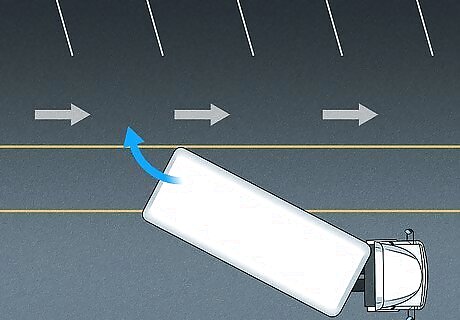
Swing out wide with your cab. For attached-bed trucks as well, but especially for semi-trucks/vehicles with a trailer, you should swing your front-end in an outward arc away from your parking spot by cutting your wheel in the direction of the parking spot. This will allow the rear-end of your vehicle to cut sharply in the direction of the space you are attempting to park in. Once your rear-end is angled diagonally into the spot, straighten it by turning your wheel ¼ turn or less in the direction away from the spot. The more space between you and the already parked vehicles/obstacles surrounding the spot in which you are attempting to park, the more time you'll have to align your rear end with the parking spot. This will give you more space to make small adjustments and guide your rear-end into the spot. Outside of your initial hard cut in the direction of the parking spot, which began the hard turn of your rear-end toward the spot, you should only make slight adjustments while backing up. Large adjustments will likely result in over- or under-steering. If you feel your angle of approach too far off, you should pull out and start again. You should keep a close eye on the front- and rear-end of your vehicle during these maneuvers. While swinging out wide with your cab to angle your rear-end into the spot, it's easy to swing out into cars parked in spots across from the one you are backing into.
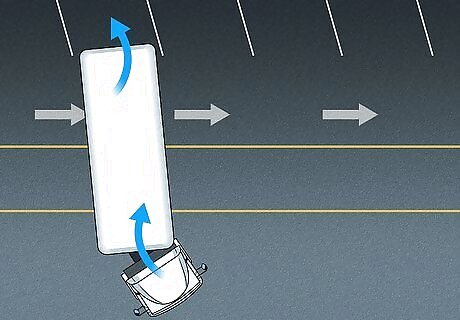
Straighten out your cab. Once your rear end is aligned with the spot, your cab will likely still be at an angle to it. Allow your rear end to travel a few more feet into the spot, then turn your wheel in the direction you made your first hard cut - in the direction of the spot. This should begin straightening your cab without changing the angle of your rear-end. Use gentle steering corrections at this point; oversteering could result in the angle of your trailer/rear-end changing significantly. Some spots are too narrow or are at too sharp of an angle for you to back into in one attempt. Even experienced large vehicle drivers sometimes need several tries before their vehicle is in the right position when backing into a spot. Adjust your vehicle as necessary. You may need to pull out of your spot, straighten your vehicle one more time, and reverse back into it, nice and even. When pulling out, be careful your rear-end does not cut short or wide into surrounding vehicles.
Parking Large Vehicles Safely
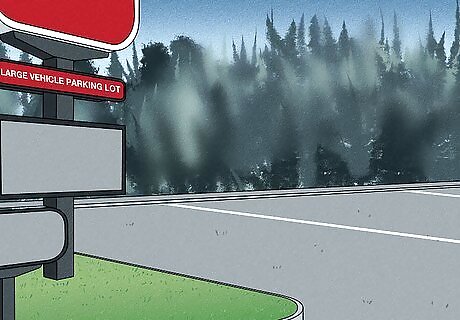
Make use of designated large vehicle parking. Many main route establishments, especially rest stops and designated “trucker” stops, will have special parking spaces intended specifically for large vehicles, like semis and moving trucks. Be on the lookout for places such as these, as this kind of parking will make your job much easier. Some semi-trucks can need as much as four times the space used by a normal sized car. You might want to plan your route well in advance so that you know where you can park easily while on your trip. A few popular sites that give comprehensive resources on roadway information are: https://longhauler-usa.com/
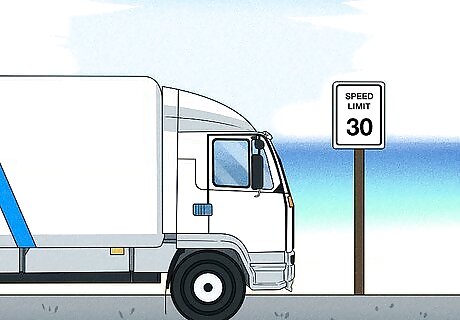
Know the legal expectations for large vehicles. Due to the fact that your large vehicle can block the view of smaller ones and sometimes create a dangerous blind spot on the road, there are laws in place to prevent this from happening. These laws will vary between state and country, but generally you should never: Park on a road with a speed limit over 30 mph (48 kph) unless your vehicle is disabled. Park in a way that blocks the view of the road from driveways and other streets. Park with your vehicle facing opposite the direction of traffic.
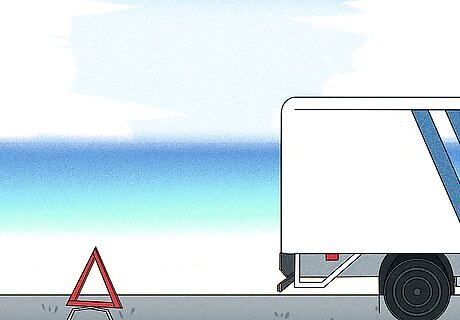
Signal emergency stops soon after occurring. When you are forced to stop on the side of a road due to mechanical issues or some other problem, you must place emergency warning devices no later than ten minutes after coming to a stop. Different kinds of roads will require different placement of your warning devices, such as: On or near a one-direction street or a divided highway, you will need to place your warning devices at 10, 100, and 200 feet (3, 30.5, and 61 m) behind your vehicle. On a two-lane road with traffic that moves in either direction, or on an undivided highway, you should place warning devices 10 feet (3 m) in front of and behind the front and rear corners of your vehicle and 100 feet (30.5 m) ahead of and behind your vehicle. On bends, curves, and hills that obstruct the view of your warning devices, you’ll need to place your rearmost device so it can be clearly seen before the sight obstruction.
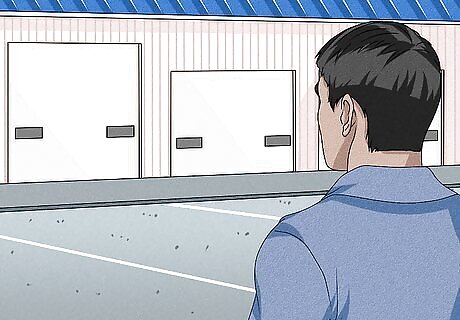
Make a physical check of potential parking spots. Smaller parking lots and residential areas are built with smaller vehicles in mind. The best way you can gauge the space of these places is by stepping out of your vehicle and getting a clear look of your surroundings. If possible, you should make use of a spotter, who can direct you as you move into the spot safely.
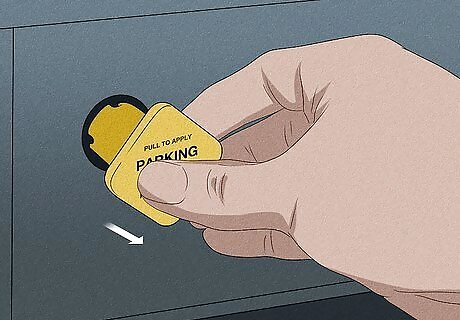
Use your parking break always. Larger vehicles are much heavier than your average sedan. If your vehicle were to experience a critical brake failure, its weight would make it even more dangerous to others if it started to roll. You can easily prevent this from happening by always using your parking break as an extra safety measure.
















Comments
0 comment